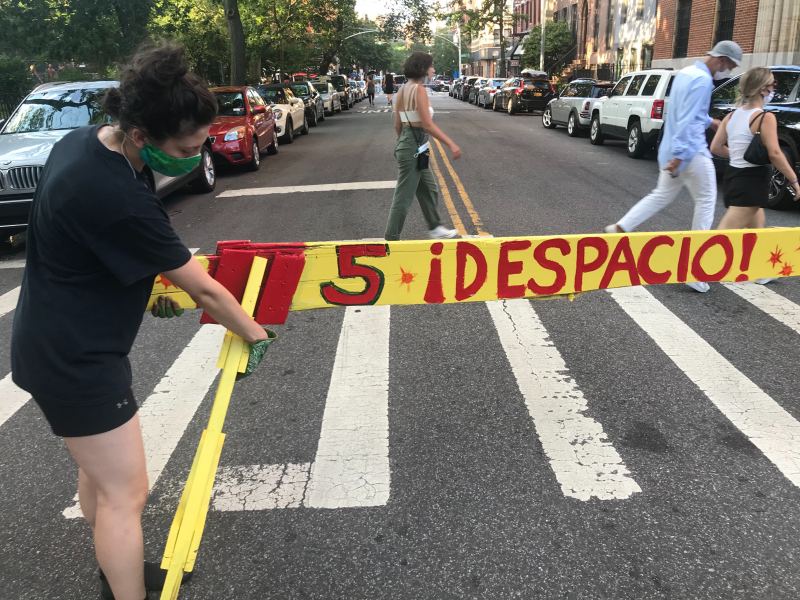Avenue B Open Street Group to NYPD: ‘We Got This’

A group of East Village residents fired the NYPD from overseeing its open street — and now the car-free roadway is working as intended.
The new Loisaida Open Streets Community Coalition formed out of necessity along Avenue B: residents were becoming frustrated that the NYPD could not be trusted to put out their blue sawhorses every morning at 8 a.m. The sawhorses are crucial because they can deter some drivers, but early reviews of the open streets program show that the best ones have consistent preventative measures, which is always followed by more use and more safety.
But those sawhorses don’t do anything if the NYPD forgets to put them out.
“Having the barriers up more consistently does slow motorists down [and] gives people more confidence to walk in the middle of the street,” said Sophie Maerowitz, the co-founder of the group of volunteers, which formally applied through the Department of Transportation to take over from the Ninth Precinct.

Now the NYPD sawhorses have been painted by community members to not only offer driving tips (“slow car,” “Despacio!”), but also broaden the definition of safe streets (“Black Lives Matter,” “Sin justicia, no hay paz”). “We wanted to just imbue these barriers with the spirit of the East Village,” Maerowitz said. (Assembly Member Harvey Epstein allows the group to store the bespoke barricades at his office on Avenue B and Seventh Street.)
This project hasn’t just allowed community members to take control when they felt the NYPD was falling down on the job, it’s helped build unity in a time of need, which is exactly the goal of open streets program. This isn’t just putting out barricades every morning, but a team effort that builds unit against a common foe: a city failing to get the job done. (Indeed, since the beginning of the initiative, residents in many neighborhoods have complained of the NYPD’s inconsistency.)
More is coming: This weekend, a group in Greenpoint organized in the same way and plans to oversee the barricades on Driggs Avenue and Russell Street. But not every community has a critical mass of people that has the time, resources or desire to ensure the success of a city program. And not every community even thinks open streets are a priority in the middle of a crisis — the coronavirus pandemic — and an historic movement that is seeks to redefine the national narrative.
Then again, maybe fighting for an open street is a start.
“I think people really need a community project like this to rally around, feeling so out of control in this pandemic…,” Maerowitz said.





